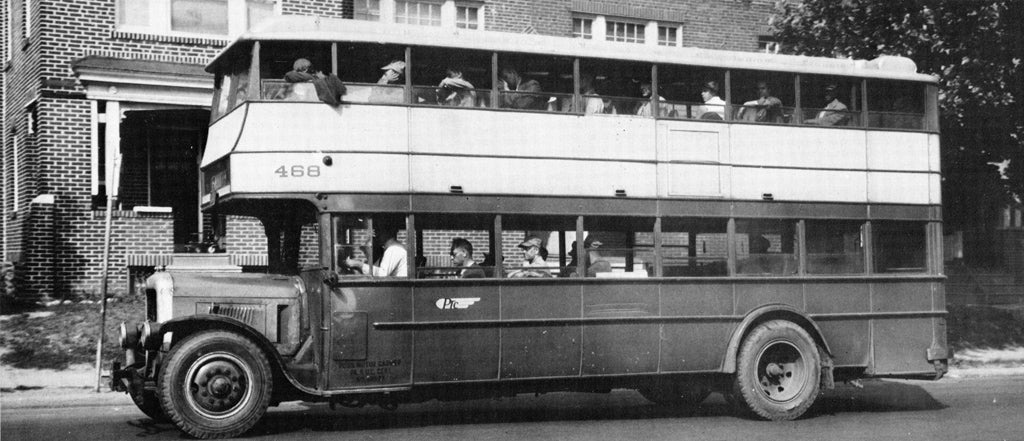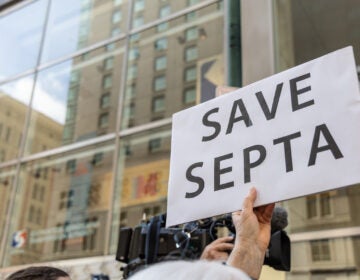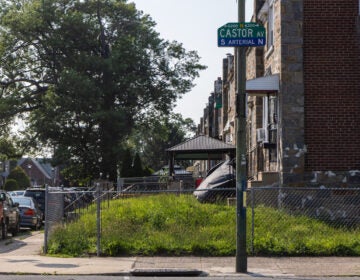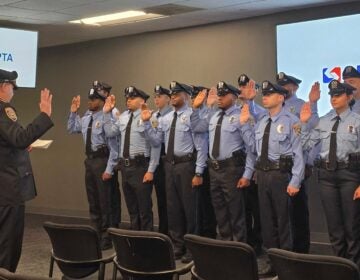Streetsplainer update: Turns out a SEPTA predecessor used double-decker buses

Welcome to Streetsplainers, an occasional series of answers to those often overlooked questions about our beleaguered/beloved transportation systems: Just what the heck is that thing in the road? Why on Earth would SEPTA do that? How does that weird doohickey work? E-mail Jim your questions, and he’ll chase down the answers, hopefully in a reliably on-time fashion.
Ok, so this isn’t so much an update as the correction of an oversight from last week’s Streetsplainer on why SEPTA doesn’t use double decker buses.
Reader Ira Schreiber of Aurora, Colorado sent me this email after the article ran: “Don’t forget that PRT had a fleet of double deck buses built by Yellow Coach running along Broad Street on the route C. I vaguely remember them.”
It’s turns out that Schreiber, 78 and a self-described “transit nut” who grew up in Haddon Heights, NJ, has a pretty great memory.
The PRT Schreiber mentions was the Philadelphia Rapid Transit Company, which operated a fleet of 200 double decker buses until 1948, according to Philadelphia Trolley Tracks, a website dedicated to the history of Philly’s trolleys.
The Philadelphia Rapid Transit Company collapsed in 1940 and was reorganized as the Philadelphia Transportation Company. In the 1950s, PTC was owned by National City Lines, which favored buses over streetcars, but apparently not double-deckers.
PTC soon fell into financial trouble, along with the commuter rail lines operated by the Pennsylvania and Reading Railroads, as more and more Americans bought cars and moved to the suburbs. By 1968, the Commonwealth had created SEPTA and combined the various insolvent companies trains, trolleys and buses into one Frankenstein’s monster of a transportation system.
And so, if you’ve ever looked at a SEPTA map and wondered just who the hell planned it, there’s your answer: no one. PRT was itself the result of a number of mergers and consolidations overs the decades between the 1880s and 1900s before it received a fifty-year contract from City Hall in 1907 to operate a private transit monopoly.
Despite the monopoly, PRT struggled with labor issues and financial troubles that had it on the verge of bankruptcy until 1916. While PRT struggled to build the first elements of the Market-Frankford Line, better-managed companies in New York City were busy building much of the city’s subway system. By the time the Broad Street Line opened in 1928, the Great Depression was just around the corner, bringing with it the end of an era of massive, privately built infrastructure projects.
Before all that, the various privately owned streetcar and omnibus lines often competed with one another, leading to plenty of redundancies and overlaps—and some gaps—in services. Getting across, or even through, town often meant disembarking from one station and walking to the next.
That’s why opening the commuter rail tunnel in 1984 was one of Philadelphia’s largest public transportation projects, ever. It finally connected lines operated by two of SEPTA’s predecessors, the Reading and Pennsylvania railroads, and expanded connections to other lines it inherited from PTC.
This isn’t a problem unique to Philly. Hell, San Francisco still has it: there are over 20 operators in the nine-county Bay Area. New York’s MTA and Boston’s MBTA have similar histories.
The double decker buses were built in 1925 and 1926 and ran on three routes: Route A (Roosevelt Boulevard), Route C (Broad Street) and Route D (Chestnut and Walnut Streets). They could fit 71 passengers: 32 on the first floor and 39 on the upper deck, which initially didn’t have a roof to protect passengers from inclement weather.
WHYY is your source for fact-based, in-depth journalism and information. As a nonprofit organization, we rely on financial support from readers like you. Please give today.






